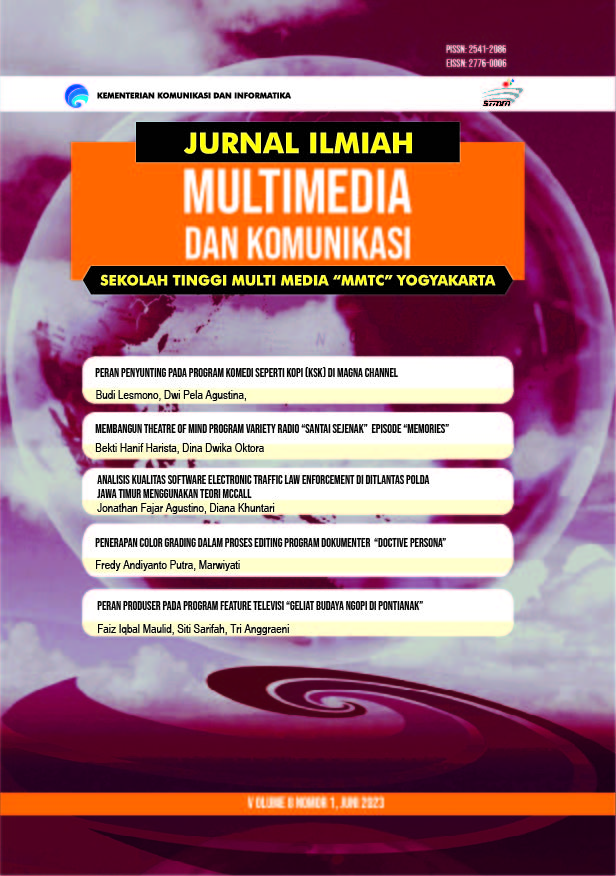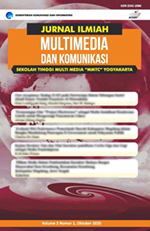Penerapan Color Grading dalam Proses Editing Program Dokumenter “Doctive Personaâ€
DOI:
https://doi.org/10.56873/jimk.v8i1.231Abstrak
The development of digital television technology was also followed by the rapid growth of audio-visual media including YouTube, Netflix, Instagram, Tiktok and many other digital platforms. Programs that present information and entertainment include documentaries. The author produces a documentary biography of an artist engaged in puppets or dolls. One of the things that can improve video in editing is color grading. When observing documentary works, there are several works that ignore the application of color grading resulting in color jumping. The purpose of creating this production work is to apply color grading techniques using basic correction, color wheels and HSL Secondary. The results of the analysis show that basic correction techniques are used to maintain white balance, exposure, contrast, highlights, shadows, blacks, and saturation in images so that they have balance and continuity between images. Furthermore, the application of color wheels is applied to create the mood or atmosphere that the story wants to build so that it can add dramatic and aesthetic elements to the documentary. Then HSL Secondary is applied using a circle of color elements and a luma slider so that the skin tone or skin tone of the sources and talents looks more real and comfortable for the audience to see.
Unduhan
Unduhan
Diterbitkan
Terbitan
Bagian
Lisensi
Penulis yang menerbitkan artikel di jurnal ini menyetujui ketentuan berikut:
1. Hak Cipta tetap pada penulis dan memberikan hak kepada Jurnal Ilmiah Komunikasi dan Multimedia sebagai otoritas untuk menerbitkan artikel dengan Lisensi Creative Commons Atribusi 4.0 Internasional, yang memungkinkan artikel untuk dibagikan dengan sepengetahuan penulis artikel dan jurnal ini sebagai tempat publikasi.
2. Penulis dapat mendistribusikan publikasi artikelnya secara non-eksklusif (misalnya: pada repositori universitas atau buku) dengan pemberitahuan atau pengakuan publikasi di jurnal Option.
3. Penulis diperbolehkan memposting karyanya secara online (misalnya: di situs pribadi atau di repositori universitas) sebelum dan sesudah proses penyerahan (lihat Pengaruh Akses Terbuka)







